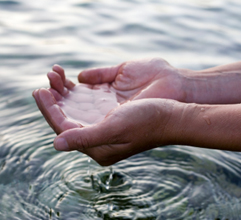Global Scans · Clean Water and Sanitation · Weekly Summary

In September 2015, 193 world leaders agreed to 17 Global Goals for Sustainable Development. If these Goals are completed, it would mean an end to extreme poverty, inequality and climate change by 2030.
Goal 6. Ensure availability of water and sanitation for all.
- [New] Water scarcity As freshwater scarcity grows in markets around the world - and demand for water increases for semiconductor manufacturing and cooling data centers - more water rights conflicts will arise. EY
- [New] Iranian affiliated hackers hit public infrastructure like water facilities, exploiting PLC vulnerabilities to demonstrate they could disrupt physical processes. DeepStrike
- [New] By around 2030, the probability of a water shortage event is estimated at roughly 1%, rising to about 5% by 2050 as climate change and water demand increase. FoxesSellFaster.com
- [New] Researchers project a roughly 17% increase in water usage by 2050 for the DC, Maryland, and Northern Virginia region. FoxesSellFaster.com
- [New] Under the stress of climate change, population growth, and rising industrial demand, particularly from data centers, the Potomac River may no longer be able to meet the drinking water needs of the DC region during a severe drought by 2030. FoxesSellFaster.com
- [New] Governments currently meet only 40% of the estimated $4 trillion in investment, or roughly $250 billion annually, in funding needed for water and sanitation from 2025-2040. Boston Herald
- [New] Asian nations will need $4 trillion for water and sanitation between 2025 and 2040 - $250 billion a year, the Asian Development Bank said in a report released Monday. Boston Herald
- [New] Europe is facing increasing water scarcity, water quality degradation, and climate-related threats to both human well-being and economic competitiveness. EUbusiness.com | EU news, business and politics
- [New] Recently Tehran Iran, with over 9 million people, warned it could have to evacuate its entire population due to extreme water shortage. The Systems Perspective
- [New] Iran's current drought is the worst for at least 40 years and water levels are shrinking at a time of year when you would normally expect storage to be recovering, not collapsing further. CNN
- [New] As technology matures, smart indoor plant watering system solutions will play a pivotal role in supporting global water conservation and sustainable agriculture goals. Farmonaut
- [New] By 2030, data center campuses across the United States could consume between 730 million and 1.12 billion cubic meters of water each year - the equivalent usage of between 6.5 million and 10 million Americans - a study published this week in Nature Sustainability suggests. Circle of Blue
- In February of 2025, FDA will issue a proposed rule on the permanent listing of lake (non-water soluble) colour additives. Arnold & Porter
- Approximately 50% of Iran's population could soon face a shortage of drinking water. Caliber.az
- Iran's water crisis is affecting the Iranian regime's ability to provide electricity to its citizens, which could eventually lead to domestic unrest. Critical Threats
- China's Sponge Cities, which incorporate permeable surfaces and green spaces that capture, filter, and store water, reducing flood risks and promoting water reuse, are an excellent example of how Green Cities can improve climate resilience. Future Cities - Africa Green Building Summit 2025
- Decarbonization activity in the Humberside cluster alone could push the Anglian Water region into deficit as early as 2030, with a projected shortfall of 130 million liters per day by 2050. Yahoo News UK
- The UK could face a national shortfall of nearly five billion liters of water per day by 2055. Yahoo News UK
- By 2050, decarbonization in the UK will require an additional 860 million liters of water per day. Yahoo News UK
- Without urgent action, the high water demands of industrial decarbonization could outpace supply in key regions as soon as 2030. Yahoo News UK
- Water scarcity could become a significant stumbling block on the UK's path to net zero. Yahoo News UK
- Global data center water consumption is projected to reach 560 billion liters in 2025. AstuteAnalytica India Pvt. Ltd.
- According to the U.S. Environmental Protection Agency's 2023 Drinking Water Infrastructure Needs Survey, Pennsylvania is projected to require a $24.3 billion investment over the next two decades to modernize and maintain its drinking water systems. City & State Pennsylvania
Last updated: 14 December 2025
